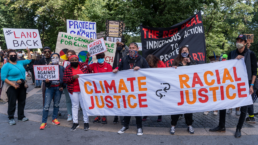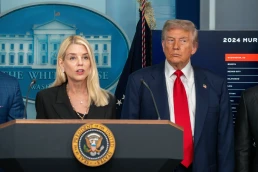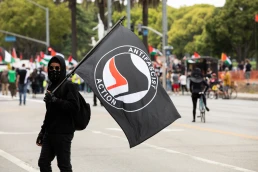To effectively fight against environmental racism, the U.S. government must work to protect BIPOC neighborhoods from the racial discrimination that puts them in danger of pollution and its negative effects.
By Sophie Hirsh, Green Matters
No one on Earth is safe from the effects of the climate crisis — but many are impacted by it much more than others. The truth is, climate change unfairly targets people of color, highlighting how the climate crisis and racial injustice are inextricably linked. All of this falls under the umbrella of environmental racism — but what is environmental racism, exactly?
The federal government has just made a disappointing declaration in regards to fighting for environmental justice, announcing that it will no longer consider race as a factor. Read on for a look into this news, and to learn about the basics of environmental racism.

What is environmental racism?
Dr. Robert Bullard, known as the “father of environmental justice,” defines environmental racism in his book Dumping in Dixie as “any policy, practice or directive that differentially affects or disadvantages (where intended or unintended) individuals, groups, or communities based on race,” as reported by the UNM Newsroom.
Essentially, environmental racism refers to the ways environmental issues disproportionately affect people of color, BIPOC communities. And this is never accidental, but rather systemic, as governments, corporations, industries, and people in power enact policies and build hazardous infrastructure in communities of color. In fact, according to the NAACP, the top factor for toxic facility locations in the U.S. is race.
Recent Posts
Dems Demand Answers as Trump Photo Disappears From DOJ Online Epstein Files
December 21, 2025
Take Action Now “What else is being covered up?”By Brett Wilkins, Common Dreams Congressional Democrats on Saturday pressed US Attorney General…
Elon Musk Is Vowing Utopia Driven by AI and Robotics. Bernie Sanders Has a Few Questions
December 20, 2025
Take Action Now “I look forward to hearing about how you and your other oligarch friends are going to provide working people with a magnificent life…
U.S. Military Willing To Attack “Designated Terrorist Organizations” Within America, General Says
December 19, 2025
Take Action Now “If I had no concerns and I was confident in the lawful order, I would definitely execute that order.”By Nick Turse, The……
DOJ Won’t Meet Friday Deadline To Release All The Epstein Files
December 19, 2025
Take Action Now The delay means the White House is in apparent conflict with a law President Donald Trump signed in November.By Gregory…




